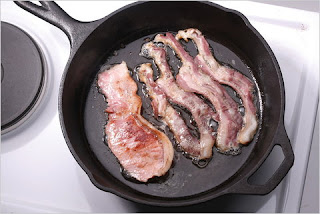Here is a brief synopsis of the main thesis of his book. Milk consists of three parts: 1) fat or cream, 2) whey, and 3) milk solids. For this story we are only concerned about the milk solid part, as the fat and whey don’t have this “devil”. The milk solid part is composed of many different proteins which have their own names, lactose, and other sugars. It is the protein part of the solid we’re interested in. One of these proteins is called casein, of which there are many different types, but the one casein we are interested is the predominant protein called beta- casein.
As you may or may not know, all proteins are long chains of amino acids that have many “branches” coming off different parts of the main chain. Beta casein is a 229 chain of amino acids with a proline at number 67 – at least the proline is there in “old- fashioned” cows. These cows with proline at number 67 are called A2 cows and are the older breeds of cows (e.g. Jerseys, Asian and African cows). Some five thousand years ago, a mutation occurred in this proline amino acid, converting it to histidine. Cows that have this mutated beta casein are called A1 cows, and include breeds like Holstein.
The side chain that comes off this amino acid is called BCM 7. BCM 7 is a small protein (called a peptide) that is a very powerful opiate and has some undesirable effects on animals and humans. What’s important here is that proline has a strong bond to BCM 7 which helps keep it from getting into the milk, so that essentially no BCM 7 is found in the urine, blood or GI tract of old-fashioned A2 cows. On the other hand, histidine, the mutated protein, only weakly holds on to BCM 7, so it is liberated in the GI tract of animals and humans who drink A1 cow milk, and it is found in significant quantity in the blood and urine of these animals.
This opiate BCM 7 has been shown in the research outlined in the book to cause neurological impairment in animals and people exposed to it, especially autistic and schizophrenic changes. BCM 7 interferes with the immune response, and injecting BCM 7 in animal models has been shown to provoke Type 1 diabetes. Dr. Woodford presents research showing a direct correlation between a population’s exposure to A1 cow’s milk and incidence of auto-immune disease, heart disease (BCM 7 has a pro-inflammatory effect on the blood vessels), type 1 diabetes, autism, and schizophrenia. What really caught my eye is that BCM 7 selectively binds to the epithelial cells in the mucus membranes (i.e. the nose) and stimulates mucus secretion.
For reasons which are unclear historically, once this mutation occurred many thousand years ago, the A1 beta casein gene spread rapidly in many countries in the western world. Some have speculated that the reason for this wide spread of A1 cows is that the calves drinking A1 cows milk and exposed to the opiate BCM7 are more docile than their traditional brethren (in effect, they were stoned). This is only speculation, of course. But what is true is that basically all American dairy cows have this mutated beta-casein and are predominantly A1 cows.
The amazing thing for me is that all these years Sally was right: it’s not the fat, it’s not the whey, and it’s not raw milk. Consider French cheese – mostly due to culinary snobbery, the French never accepted these A1 breeds of cow, claiming they have lousy milk. Voila, they have good milk and cheese. Our issue in America is that we have the wrong cows. When you take A1 cow milk away, and stimulate our own endorphins instead of the toxic opiate of BCM 7, some amazing health benefits ensue.
So what are we all to do with this? Does this mean no one should drink US raw cow’s milk? One saving grace, as expressed in The Devil in the Milk, is that the absorption of BCM 7 is much less in people with a healthy GI tract. This also parallels the ideas of GAPS theory which talks a lot about this. BCM 7 is also not found in goat’s or sheep’s milk, so these types of milk might be better tolerated.
One final point: we now have one more thing to put on our activism to-do list. Dr. Woodford explains that it is fairly straightforward to switch a herd to become an all A2 herd. No genetic engineering is needed, no fancy tests, just one simple test of the Beta-casein and it can be done. Hopefully, when this becomes widespread we will end up with a truly safe and healthy milk supply. . ..Guernseys are known to produce A2 milk. Jerseys produce a higher proportion A2 than Holstein. Asian and African cattle produce A2.



